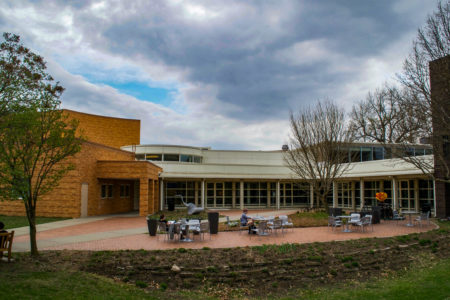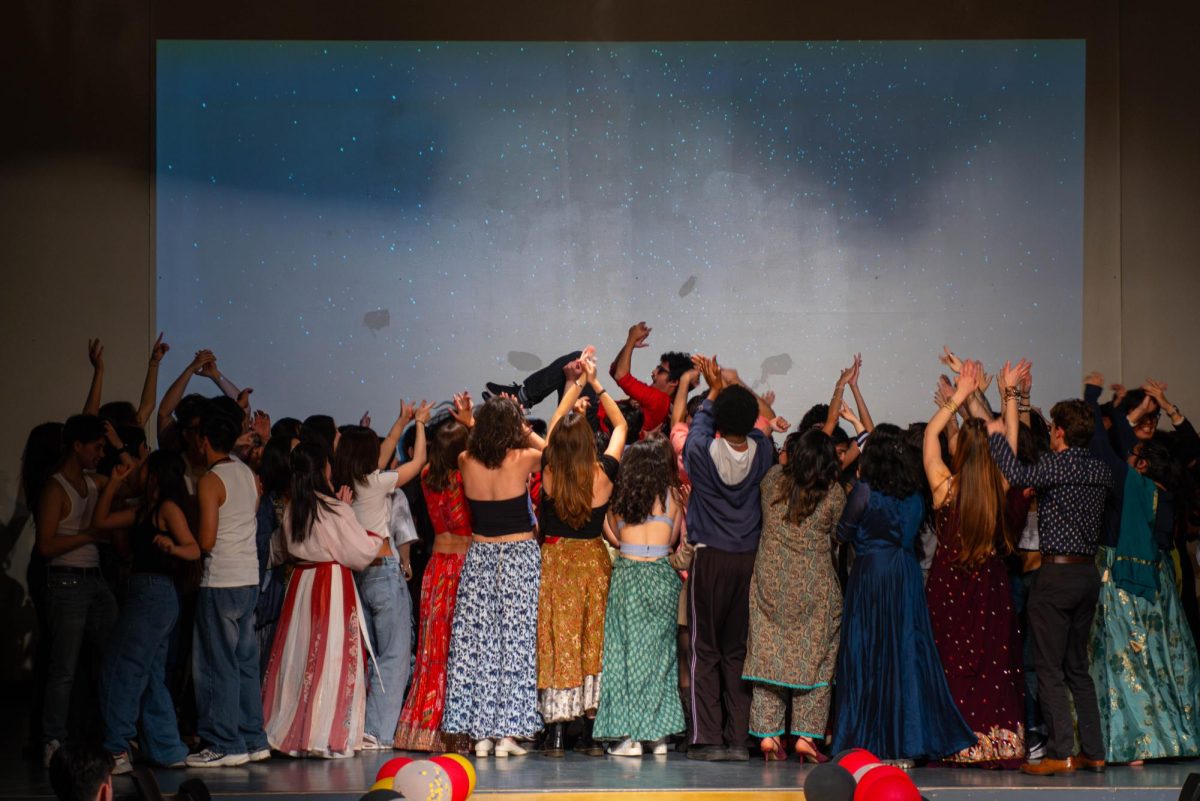
The College’s enthusiasm for the fine arts can be traced at least as far back as President John Hanson, whose tenure as president of the college spanned from 1906 to 1931. Hanson stated in an interview during his time as president that “art belongs to liberal education” and that “the ideal toward which Grinnell College is bending its efforts is to foster in every student a creative spirit of beauty as a part of daily life.” At the time of Hanson’s presidency, Grinnell had no formal fine arts building, but his dream was realized in 1961 with the construction of Grinnell College’s first Fine Arts Center, the predecessor to our current fine arts building, the Bucksbaum Center for the Arts.
The $1,400,000 Fine Arts Center was comprised of two buildings, the Arts Building and the Roberts Theater. Although a desire to bolster the presence of the arts on campus may have partially motivated the project, the September 1962 issue of Progressive Architecture reported that the construction of the Fine Arts Center, alongside Burling Library, was part of a “development plan drawn by SOM to increase the enrollment capacity of the college to 1100.” SOM is the abbreviation for Skidmore, Owings and Merrill, the Chicago-based architectural firm that designed the Fine Arts Center.
During the excavation for the Fine Art’s Center, a peat deposit was discovered below the site’s grounds. Grinnell’s Biology Department was awarded a National Science Foundation Grant to excavate the deposit, which culminated in a paper entitled “A Post-Kansan Peat at Grinnell, Iowa: A Preliminary Report.” The paper reported that the peat was a remnant of glacial deposits, and expressed the intent of the Biology Department to analyze pollen samples found in the peat for the purpose of studying interglacial ecology.
The Fine Arts Center was in use for 30 years, until Grinnell outgrew its facilities. “The current [fine arts] faculty has been pushed beyond its limits. [The Fine Arts Center] does not serve the interests and the demands of the students today,” said Liz Ballentine, then-chairman of the Board of Trustees, during the 1996 groundbreaking ceremony for what would soon become Bucksbaum. Then, in 1999, three years and $22 million later, the Bucksbaum Center for the Arts opened to the public.
The new arts building was designed by Cesar Pelli, a world-renowned architect known for designing not only the World Financial Center in New York City, but also Kuala Lumpur’s Petronas Twin Towers, which at the time were the tallest buildings in the world. Paul Nelson, Grinnell’s music technical assistant both today and at the time of the construction, speculated that Pelli may only have agreed to do such a small project “because he hadn’t done anything like this before … so he was breaking ground.”
Nelson represented the college’s music department during the building’s design process. He noted that none of the architects working on Pelli’s team had any significant experience in the arts, which “really came back to bite us,” in his opinion. He further speculated that function may not have been the highest consideration in choosing an architect for the building, and that “the trustees wanted to get a big-name building, so they went with Pelli.”
Bucksbuam was designed to follow the curve of Sixth Avenue and, to do so, the architects chose to arrange the music wing as a series of pie-shaped rooms.
“We’ve had a lot of problems here with this room, room 103,” Nelson said. “Acoustically, we’ve had problems with it because of this pie-shaped concept.”
He further conveyed that this flaw perhaps reflected the architects’ lack of knowledge of the arts. “Did we get our bang for the buck?” Nelson pondered. “I’m not sure we did.”
On the other hand, Grinnell’s then-president Russel Osgood praised the building’s design. As printed in the Des Moines Register’s September 21, 1999 issue, Osgood stated, “He [Pelli] was trying not to overwhelm the campus with a huge building. It looks like a cluster of small buildings instead of one large building. It’s brilliant.”
Although Bucksbaum’s construction in the ’90s greatly expanded Grinnell’s art facilities, Nelson reported that “today we are out of room” and added that “the music department has an annex across the street now.”
“It’s tight, Nelson said. “Some of it was the school saving money.”
Today, it seems that the Grinnell student body’s enthusiasm for the arts may be stretching the confines of the college’s art facilities once again.


















































James Holden • May 4, 2018 at 3:33 pm
An informative and well-written article about the art building. Of course I am not an objective reader, for the author is my #1 granddaughter.